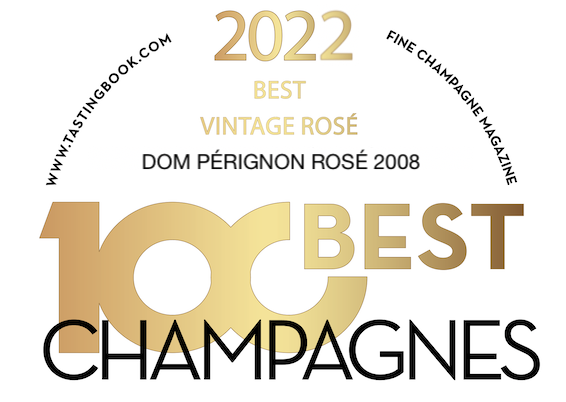The Tb points given to this wine are the world’s most valid and most up-to-date evaluation of the quality of the wine. Tastingbook points are formed by the Tastingbook algorithm which takes into account the wine ratings of the world's best-known professional wine critics, wine ratings by thousands of tastingbook’s professionals and users, the generally recognised vintage quality and reputation of the vineyard and winery. Wine needs at least five professional ratings to get the Tb score. Tastingbook.com is the world's largest wine information service which is an unbiased, non-commercial and free for everyone.
News
Dom Pérignon Rosé 2008 released
‘It’s not even an evolution, but a revolution between 2000 and today,’ said Dom Pérignon chef de cave Vincent Chaperon. ‘We changed a lot of things: the selection of plots, the way we are cultivating the vines, how we’re pushing the maturity of the grapes.’
The final blend of the latest rosé vintage, which contains 55% Pinot Noir and 45% Chardonnay, features 10% Pinot Noir red wine, which is low c...
Wine Description
The Story
Dom Pérignon Rosé is a tribute to Pinot Noir. To work with Pinot Noir continually requires excellence and humility. In that regard, Dom Pérignon Rosé is a paradox to the point of contradiction as it is the perfect balance of Chardonnay and Pinot Noir.
Although it took over ten years to reach the light of day, the color of Dom Pérignon Rosé dares to express all the tension between youth and maturity, between exhibition and restraint.
Dom Péri...
Wine Information
2008 was dominated by grey, overcast skies – an exception in a decade characterized by bold, generous sunshine. Spring and summer rought the same lack of sunlight and absence of high temperatures. It was September that saved the vintage, belatedly and miraculously. Just when the harvest was getting underway (on September 15), the weather conditions were finally perfect: blue skies and prolonged north-northeasterly winds. Picking was spread out...
Vintage 2008
2008 -The Champagne vintage set to make history!
A first taste of leading winemakers’ 2008 champagnes reveals a miraculous vintage, bubbling with potential, which – whisper it – might just prove the greatest in living memory.
2008 was not, by any standards, a vintage year for the financial world. And for the greater part of it, 2008 was a pretty poor year for Champagne too: spring was freezing, summer gloomy and overcast. But then, aroun...

